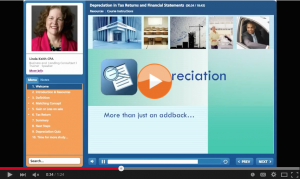Jordy’s question:
Should Form 4562 depreciation be added back to cash flow? Every analysis I have seen does not use Form 4562 and instead goes to the schedules (on the individual return) and the front page (on the business returns) for depreciation expense. However, I have a case where there is depreciation showing up on Line 4 of Form 1125-A (Additional section 263A costs). It says refer to statement 10, which does indeed include $90k depreciation. Do I add this depreciation to cash flow?
Linda’s answer:
I agree that most credit analysts make the simplifying assumption that the depreciation on the front page of the tax return is what we need to add back if we have started with taxable income, also from the front page, for our analysis.
That said, as you discovered, there is a possibility of depreciation flowing onto the Cost of Goods Sold schedule. This happens when a producer of inventory or a reseller of inventory is required to allocate some of the indirect costs to cost of goods sold. This is under section 263a, thus the line it is reported on.
Exceptions to the rule
If a producer’s total indirect costs are under $200,000 they are not subject to the 263a allocation rules. There is a more generous exception for resellers of personal (not real) property. Generally, it provides that if a taxpayer’s average gross receipts over the prior three years are less than $10 million, the taxpayer is not subject to Section 263A.
Let’s get practical
With the exceptions out of the way, as a practical matter, I would consider how material this add-back would be. If it is significant, and if beginning and ending inventory or either small in amount or consistent beginning to ending, I believe you can make the case for adding it back as it has made it’s way to the front page of the return on the COGS line instead of the depreciation line.
Simplifying assumptions
With many of our borrowers, the amount of depreciation on COGS might be minimal and it is easier just to add back the depreciation on page one. But when it makes a difference, as it might in your case, it is worth going beyond the simplifying assumptions.
Another assumption
I am assuming you start with taxable income from page one of the business return for your analysis. If you start with Schedule M-1, Line 1, Income per books, you have a more complicated depreciation calculation to make.
Best practice?
Does this mean that it would be a good practice to look through Form 4562’s for more depreciation like this if a borrower isn’t cash flowing? Sure, especially if it is a manufacturing company that may have significant depreciation.
More help on depreciation
I know, the information on depreciation seems straightforward. That is until you get into Section 179 and 263a. Just a few wrinkles! One of the modules in our Credit Analysis Basics Course covers depreciation. And that course is part of our Basic Tax Return Analysis online program, our Advanced program and our combo.
Click here to visit www.LendersOnlineTraining.com to sign up for the online training. Make more good loans: Easier, Faster, With More Confidence.

